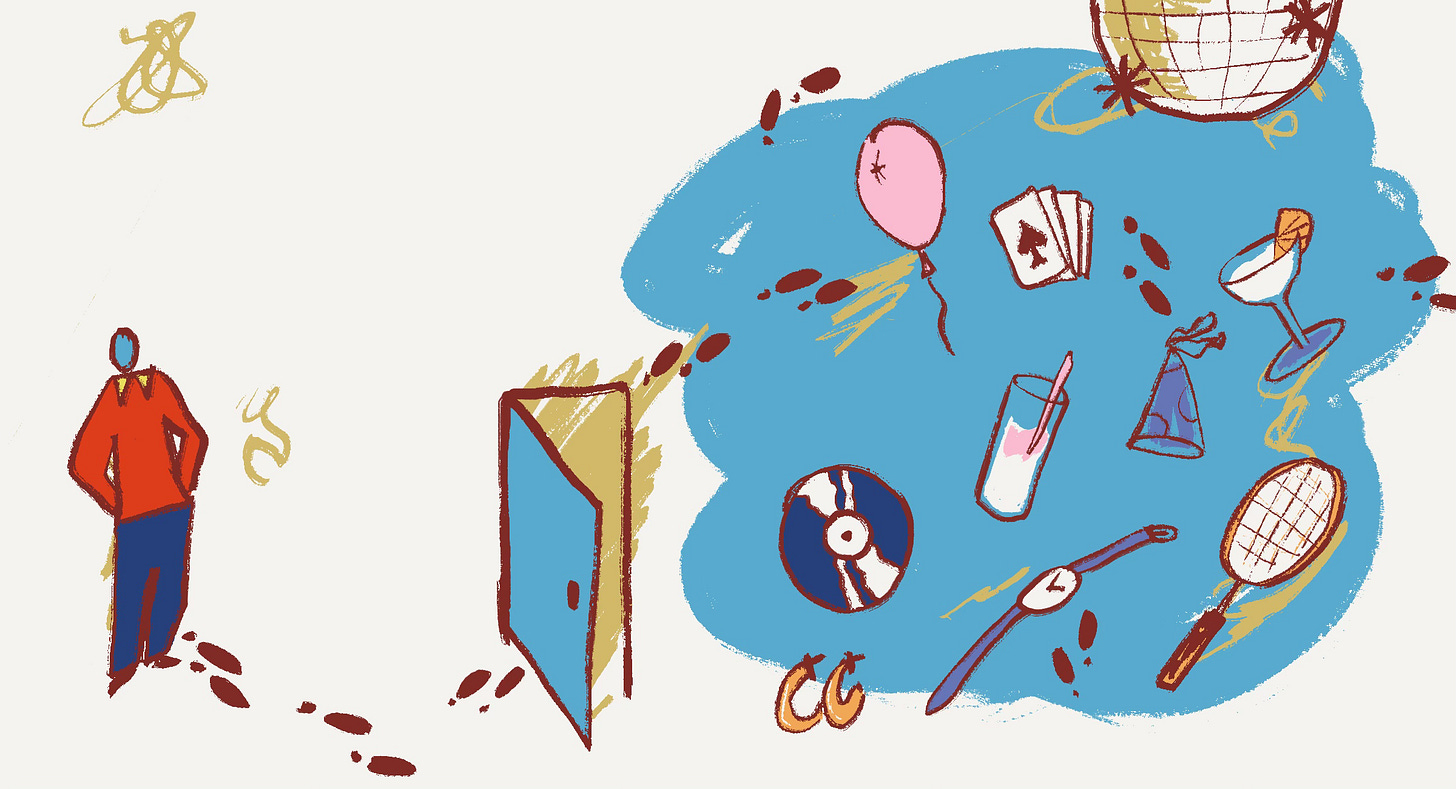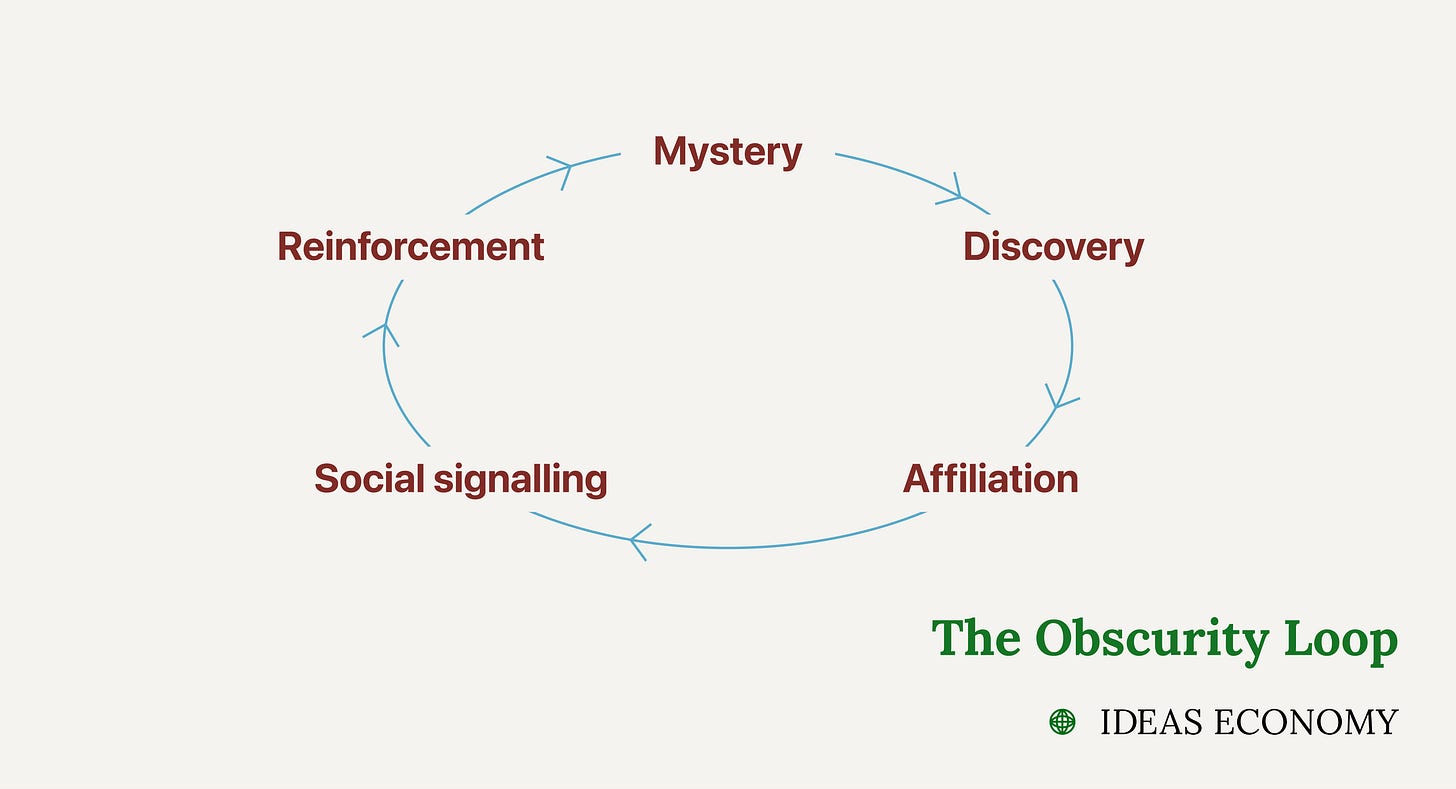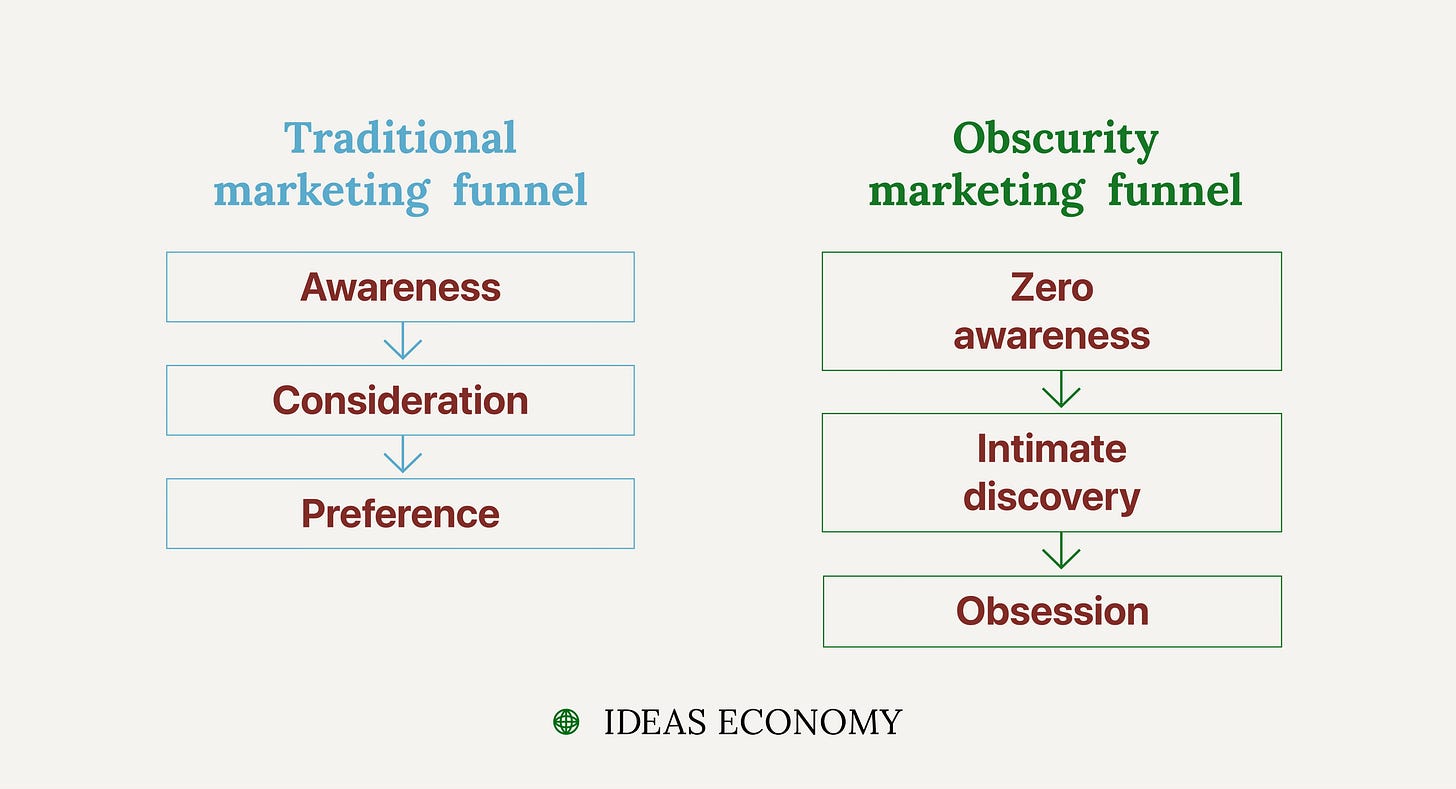The Obscurity Loop: why the coolest brands are impossible to find
How anti-scale builds influence through scarcity and social proof.
*ANNOUNCEMENT*
Introducing two forms of inquiry: MENTAL MODELS and THOUGHT ESSAYS, by Ideas Economy. Designed as a perfectly juxtaposed pairing to stimulate your mind.
· MENTAL MODELS are your monthly pocket-sized blueprints for structured intelligence. Delivered on the first Tuesday each month. Synthesised frameworks derived from current data, research, and cultural trends. Precisely curated to be easily applicable tools as you work and create.
· THOUGHT ESSAYS are your weekly dose of sharp and playfully subversive explorations. Delivered every Wednesday. Inviting you to think differently about the everyday and the systemic alike.
Now, onto your regular reading…
There’s a traditional form of ‘exclusivity’ and an obscure one. Both strategies hinge on elevating something — a brand, experience, place — as a shaper of culture and taste.
Many brands build their cultural clout on exclusivity; where the pricing, product scarcity, positioning are intentionally crafted to denote this idea. These tactics forge a brand as a marker of social status. You see this quite typically in luxury lifestyle brands, which apply legacy narratives, lavish campaign budgets, and sometimes strategic ties to culture-forward cities (hi Paris, London, New York, Milano) to position themselves as tastemakers.
Then there are brands who are only discoverable by those in the know.
Let’s talk about exclusivity through obscurity.
Brands like Cactus Plant Flea Market, The Row, or private members clubs (think Saint James in Paris) embody the idea that taste isn't taught, it's demonstrated subtly. These brands are fluent in the semiotics of wealth and cool. They know that real luxury does not shout.
The Row sells $5,000 (USD) handbags with no visible branding. Cactus Plant Flea Market thrives on engineered scarcity, with collaboration drops with Nike, Kanye West, and McDonalds at little notice, and visuals so idiosyncratic that they don't chase mass appeal. This is brand exclusivity by design.
A no-photo policy in a members club makes it non-Instagrammable, paradoxically making it more desirable. Story-worthy, over online clout. Discrete packaging or branding reinforces the idea that you're in the know, you're in that club. And no public facing communications mean you need social access to even hear about a launch. The customer themselves, not the brand, becomes the gatekeeper.
In many ways, anti-scale is a strategic choice.
You could call it anti-marketing but that doesn't quite hit the mark. Yes, it subverts traditional marketing tactics. It avoids PR, SEO, paid channels, sometimes even a website. Its power lies in absence, mystery, and peer validation over noise. Highly orchestrated. Meticulously strategised.
Scale erodes cool. And so, these brands, by design, intentionally cap their growth to protect the cachet. Instead of growing vertically (mass product expansion), they grow horizontally, with more interesting experiences, more concept drops. This looks like:
A members club opens sister clubs in Tokyo, Rome, and Mexico City, each with its own distinct personality.
A fashion label drops 100 pieces, then disappears for months.
A skincare brand sells by referral or invitation only.
This is inverse marketing. A kind of Obscurity Loop.
The Obscurity Loop:
Mystery > Discovery > Affiliation > Social signalling > Reinforcement > Repeat
This mental model hinges on a few psychological and cultural dynamics.
"If you know, you know" marketing thrives on inaccessibility. Obscurity becomes social currency. Knowing about something becomes insider status. The product or place isn’t marketed at you. It's whispered about you. To be in the know is to be part of an inner circle.
It flips the traditional marketing funnel:
Awareness > Consideration > Preference
Becomes:
Zero awareness > Intimate discovery > Obsession
It's this invisible hand of hype. These brands don't run ads. They are not loud. They grow through soft power: cool friends, niche forums, low-key celebrities, peer networks. The signal travels person-to-person, not from platform-to-person.
For this model to work:
Scarcity is engineered.
Cool is crowdsourced, not declared.
Cultural credibility beats visibility.
This is anti-marketing. But it’s more than that. It’s influence — by omission.
It’s how brands sell to cultural taste leaders.





